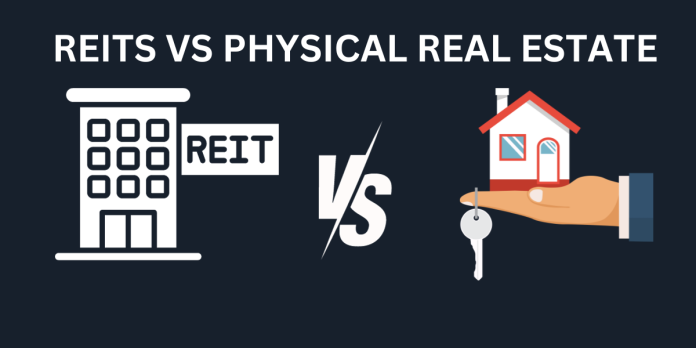A choice of choosing between traditional investing and alternative investing (AI), each with its unique philosophies, strategies, and risk profiles. This decision hinges on aligning individual investment goals, risk tolerance, and financial situation.
Traditional investing provides stability and predictability, whereas AI offers a dynamic and potentially higher-return strategy. Investors must evaluate their risk appetite and objectives to align with their long-term financial goals.
In the realm of alternative investments, real estate emerges as a significant avenue.
Three primary ways to invest in real estate:
Equity Investment in Real Estate Companies
Buying shares of a company with over 90% of assets in real estate provides the benefits of equity markets while staying focused on real estate objectives. Shareholders also enjoy dividend earnings.
Real Estate Investment Trusts (REITs):
REITs offer an effective and convenient way to invest in real estate. These publicly traded securities allow investors to access the real estate market without the direct responsibility of property ownership.
Direct Physical Real Estate Investment:
Directly owning and managing real estate properties involves purchasing, renovating, and renting out properties. While offering advantages, this method comes with greater responsibilities and risks.
When considering real estate, investors also grapple with the choice between REITs and physical real estate. REITs, being publicly traded, provide exposure to diverse real estate assets. On the other hand, physical real estate ownership offers more control but entails higher responsibilities and risks.
In alternative investments, particularly real estate, investors must conduct thorough research, seek professional advice, and diversify portfolios for risk management. As the renowned investor Warren Buffett once said, “Risk comes from not knowing what you’re doing.” It emphasizes the importance of informed decision-making in the investment journey.
Read in Detail: Investment Risk And Return Explained
Comparison of REITs and Physical Real Estate
| Feature | REITs | Physical Real Estate |
| Ownership | Indirect | Direct |
| Liquidity | Relatively liquid | Highly illiquid |
| Management | Managed by professional investment teams | Managed by the investor |
| Fees and Expenses | Incur various fees and expenses | No management fees, but may incur maintenance and management costs |
| Potential Returns | Potentially lower returns | Potentially higher returns |
| Capital Appreciation | Limited potential for capital appreciation | Significant potential for capital appreciation |
| Illiquidity | Relatively liquid, but may take time to sell | Highly illiquid |
| Maintenance and Management | No maintenance or management responsibilities | Ongoing maintenance, repairs, and management responsibilities |
| Regulatory Compliance | No regulatory compliance responsibilities beyond stock market regulations | Regulatory compliance responsibilities related to property laws, zoning regulations, and taxation |
Read: Top Performing – Real Estate Stocks
In conclusion, both REITs and physical real estate offer potential benefits and drawbacks, and the best investment choice for an individual will depend on their financial goals, risk tolerance, and time horizon. Investors should carefully consider their circumstances and preferences to determine which approach aligns with their investment strategy.


